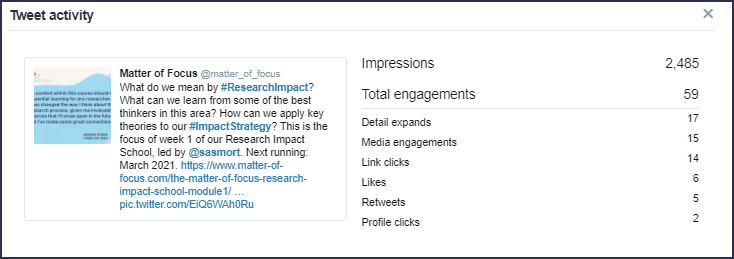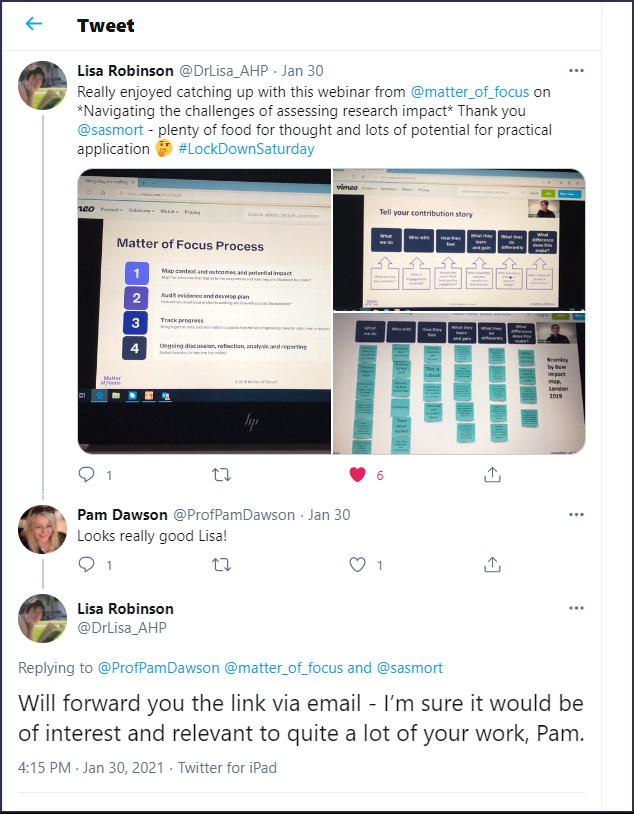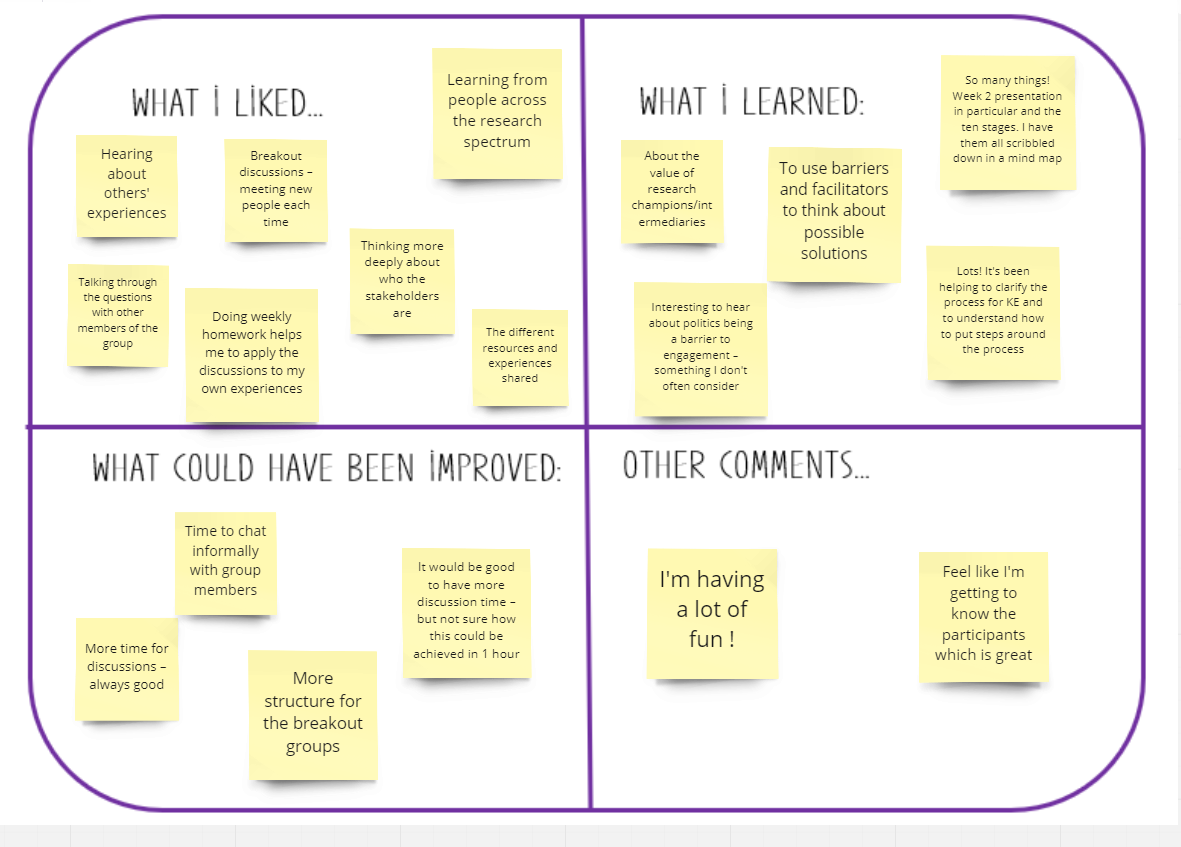Assessing the impact of research on policy, practice, behaviour or society is not easy. I have written more about this in an earlier post – Understand and track the impact of your research.
I have been assessing the impact of research and evidence-to-action projects and programmes, and advising others on impact assessment for the last 16 years. One of the things I’ve learned is that if you capture evidence as you go the whole process is so much easier.
Here are four easy things you can do to start building up the evidence of the impact of your research or evidence-to-action initiative. These can be done at project, programme, research centre, or strategic level.
Ideally, you would be thinking and analysing them against your pathway to impact. Our brief animation explains what we mean by that.
1. Track who is interested and engaged with your work
Consistently keeping records of who comes to your events or training, webinars or partnership meetings, and anything else about people that interact with your research or knowledge mobilisation activities, will be the foundation for an impact story. This is the basis for demonstrating the reach of your work – one of the REF (UK Research Excellence Framework) criteria and important to all impact.
Additionally, it’s good to keep track of what is important about these people in relation to your initiative. Who is important to the impact of this work in relation to age, geography, profession, sector, interests? Capture that information too and consistently across different types of engagement. For example, if your work is important to young people then make sure you have defined that (e.g. 16-25 years old) and capture age of people attending webinars, meetings or whatever else.
You probably have some kind of social media data, maybe across several platforms. A regular social media report that shows reach and engagement for all the social media platforms you use can also be a good building block for telling an impact story. Make use of the platforms’ in-built analytics tools. This can highlight engagement beyond the shares and likes you see in your feed.
Your social media report might include updated overall reach, downloads of key documents, growth of interest and how that happened, and any particular highlights. Whatever you decide, just pulling this together in the same format on a regular cycle can make this information much more useful.

2. Record what people are saying
Capture informal evidence wherever it comes from. This might be email, blog comments, meaningful social media engagement such as a conversation, or what a stakeholder tells you in the corridor or at an event. Make a habit of doing this and you will build up a useful source of evidence.
It is good practice to ask permission from the people saying things; although not required for engagement made publicly on social media or blogs, this is important for emails or things people say to you informally. If it’s not possible to ask permission in the moment, make a mental or written note of the comment and follow up with it later by email.
We have set up an Informal Evidence Record for our own use here at Matter of Focus, in which we record:
- the comment – quoted from email or social media (often with a screencapture), or just noted down if spoken
- who said it – including what is important about that person – are they someone in our target audience, a key professional, or other stakeholder – sometimes that might be their name, other times a category.
- the date
- if we have permission from them to use it publicly (where required).

3. Find out what are people doing and why they are interested
There are some easy and quick ways to gather more formal feedback.
My plea is always to do this early and often because this is information that is so much harder to gather afterwards.
Focus on what people are intending to do with the information they have got and how useful they think it is. Here are some ways of doing this:
When sharing your content online
Ask people why they want content you are sharing online and what they intend to do with it. Even if only 1 in 5 people completes a pop-up form (for example) before downloading, this can be a rich source of information and help you understand potential impact and where you might track further.
At events or meetings
Collect quick and simple feedback from any kind of face-to-face or virtual events or meetings. This doesn’t have to be long and complicated, just a quick question on MentiMeter, or a short postcard feedback form. Again, with a focus on what people will do next, to draw out impact intentions. You can find an example of one of our quick feedback forms and how we adapted it for online events in our post 3 feedback tools to help you track your outcomes and impact.
If you combine these feedback options with a request for a contact email address and permission to follow up, you will create a list of contacts who have interacted with the initiative who have something to say about it and can be followed up later.

4. Keep communication open
Keeping communication open is essential if you want to track impact over time. If you see each interaction with someone as the start of a mutually beneficial relationship you will be creating channels to achieve impact as well as to collect evidence about what that impact is.
Always thank people for any feedback they do give you – however you get it. Make it clear how you will use it and how valuable it is to you. As described above, ask for permission and contact details to follow people up. This can then be done on a cycle of 3 or 6 months, to keep tracking impact via emails, more formal surveys or other methods.
Simple steps with multiple benefits
Create the discipline to do these four things consistently, as early as possible and on an ongoing basis and you will:
- have strong evidence for your impact story
- create great relationships with the people that matter to your initiative
- be able to learn as you go so you can make sure you maximise your impact too.
